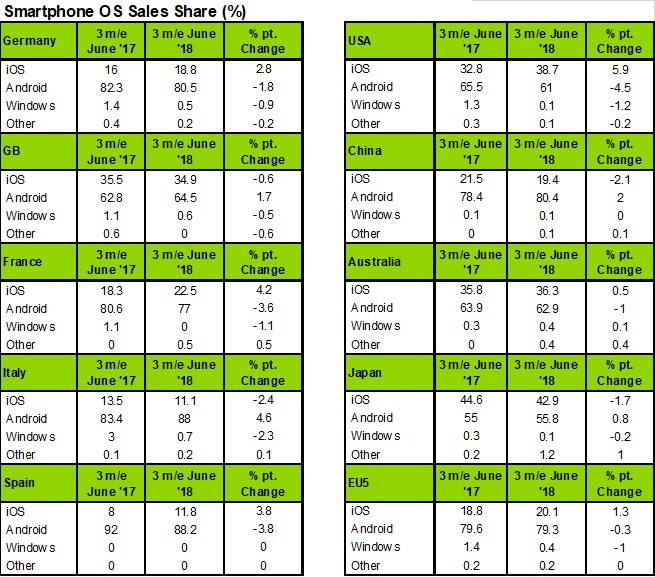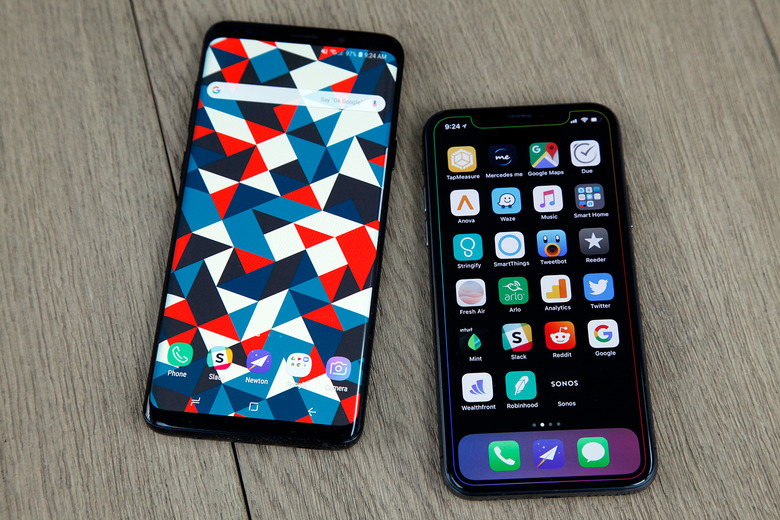iPhone X Is Only One Chapter Of Android's iPhone Nightmare
The iPhone X is a smartphone like no other, and that's probably why almost all Android vendors out there have cloned it this year. But Apple's flagship iPhone isn't the only threat to Android this year, and a new report shows that Apple's iPhone selling strategy is paying off at the expense of its biggest rivals.
The iPhone X's prohibitive price may be what's stopping buyers from upgrading to the best iPhone out there, but that doesn't mean they shop Android. Instead, many people go for the iPhone 8 series, while others purchase even older devices.
Kantar explained in a new research note that the iPhone business has been doing rather well in the three months ending in June, at the expense of Android.
In Europe, Android lost 0.3% share during the period, down to 79.3%, although Android is still the dominant smartphone operating system in the region, as well as everywhere else in the world. However, market share enough isn't enough for Android device makers to make money. It's usually Apple, the company that takes home most of the profits. Market share might help Google, but if smartphone buyers purchase iPhone instead of Android, it's certainly not good for the likes of Samsung, LG, and all the other Apple rivals out there.
In the US, Apple's share increased by 5.9% up to 38.8%, with nearly one in five smartphones sold in the region being an iPhone 8 or iPhone 8 Plus. The iPhone X was the fourth best-selling device during the period. Samsung and LG, meanwhile, were hit hard by Apple's entire iPhone lineup, Kantar Global Director Dominic Sunnebo explains:
Apple continues to wield huge power in the US market, with iPhone models making up eight out of the ten best-selling models in the past three months. Apple currently enjoys unprecedented depth across the smartphone price spectrum, ranging from the iPhone SE to the $1,000 iPhone X; resulting in continued growth and hitting Samsung and LG hard. While Samsung is well represented at the premium end of the market with its S9 and Note series, and its budget orientated J series helps compete against LG, lack of depth in the mid-high tier is allowing Apple to find a new avenue for growth.
In China, Android's market share rose 2% to 80.4% in June, but the iPhone X continues to be the top-selling device, accounting for 5.3% of all handsets sold. The iPhone X has been the best-selling phone in China since its November 2017 release. Apple is the only non-Android handset in China's top 5, which includes Huawei, Xiaomi, and the BBK Group (that's Oppo and Vivo).
The report did highlight the performance of one Android maker in a specific region. Huawei is the company in question, which has been making significant progress in the UK, going from 2.7% share a year ago to 13.7% in June, thanks to a versatile roster of phones that includes affordable handsets but also the P20 Pro flagship.

